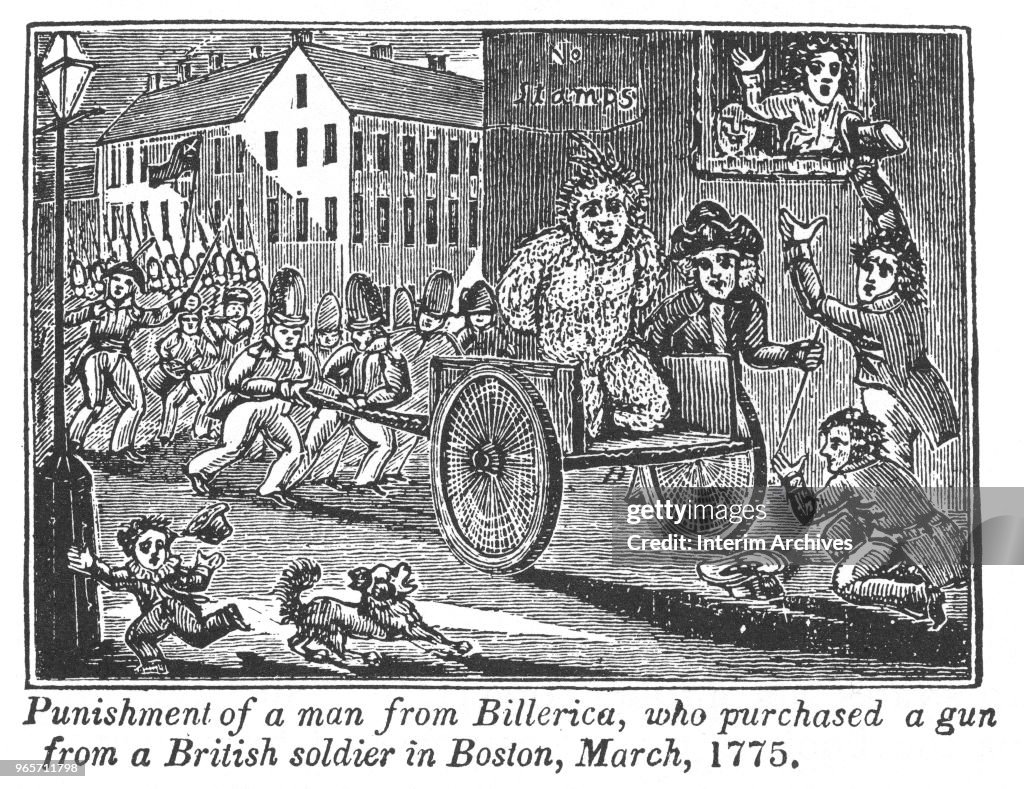
Punishment, by tar and feather, of Thomas Ditson, a man from Billerica, who purchased a gun from a British soldier in Boston, Massachusetts, March 1775. The purchase of a gun from a soldier was illegal and Ditson claimed entrapment. (Photo by Interim Archives/Getty Images)
How a Song Changed the World
Thomas Ditson Jr. of Billerica, Massachusetts, earned a place in American history through his connection to the iconic song “Yankee Doodle.”
During the Revolutionary War, the song was played thousands of times as troops on both sides marched thousands of miles along the battle paths of the war. In victory, the song immortalized the American spirit of independence and became the nation’s first unofficial national anthem.
Originally, “Yankee Doodle” was sung and played on the fife and drum by British military officers to mock the disheveled and seemingly disorganized American colonists. The tune, which dates back to the Seven Years’ War, had already undergone several lyrical adaptations by the time of the American Revolution.
However, as tensions heightened (after the Thomas Ditson Jr. affair), the lyrics were adopted and adapted by the American colonists, transforming the mockery into a point of pride.
This song captured the improvisational and resilient spirit of the colonial forces, who, despite being less formally trained and equipped than the British troops, were determined in their quest for independence.
What’s a Yankee Doodle Dandy?
The British viewed the American soldiers as ragtag, and the song’s lyrics, which described a simpleton (Yankee Doodle) who stuck a feather in his cap and called it macaroni (macaroni being a contemporary term for a fashionable dresser in London), were intended to underscore this perception.
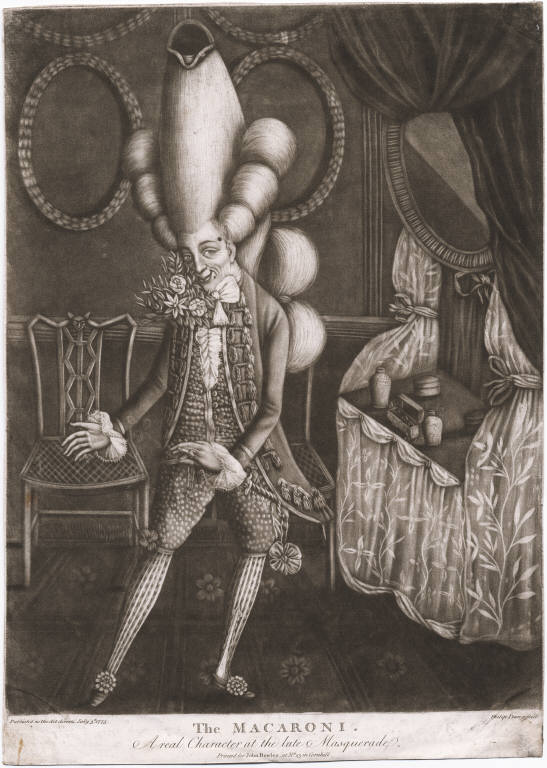
The Thomas Ditson Jr Story…
On March 8th 1775, five weeks prior to the start of the American Revolutionary War, Thomas Ditson Jr. traveled from Billerica, Ma to Boston to purchase a musket.
Unfortunately for Ditson, he was caught in a sting operation set up by British soldiers. The British were suspicious of local militias preparing for rebellion and orchestrated efforts to entrap potential insurgents like Ditson.
After his arrest, Ditson was tarred, feathered, and paraded through the streets as an example to deter others from supporting the American cause. This humiliating treatment was meant to mock and intimidate the colonial resistance.

Ditson was ordered to sit on a chair fastened to a two-wheeled cart. About forty to fifty men of the regiment, armed with muskets and fixed bayonets and led by Lieutenant Colonel Nesbit, pushed Ditson through the streets of Boston while jeering and singing insults.
The fifes and drums of the 47th played the tune of Yankee Doodle as the soldiers sang a verse composed for the occasion:
Yankee Doodle came to town,
For to buy a firelock,
We will tar and feather him,
And so we will John Hancock.
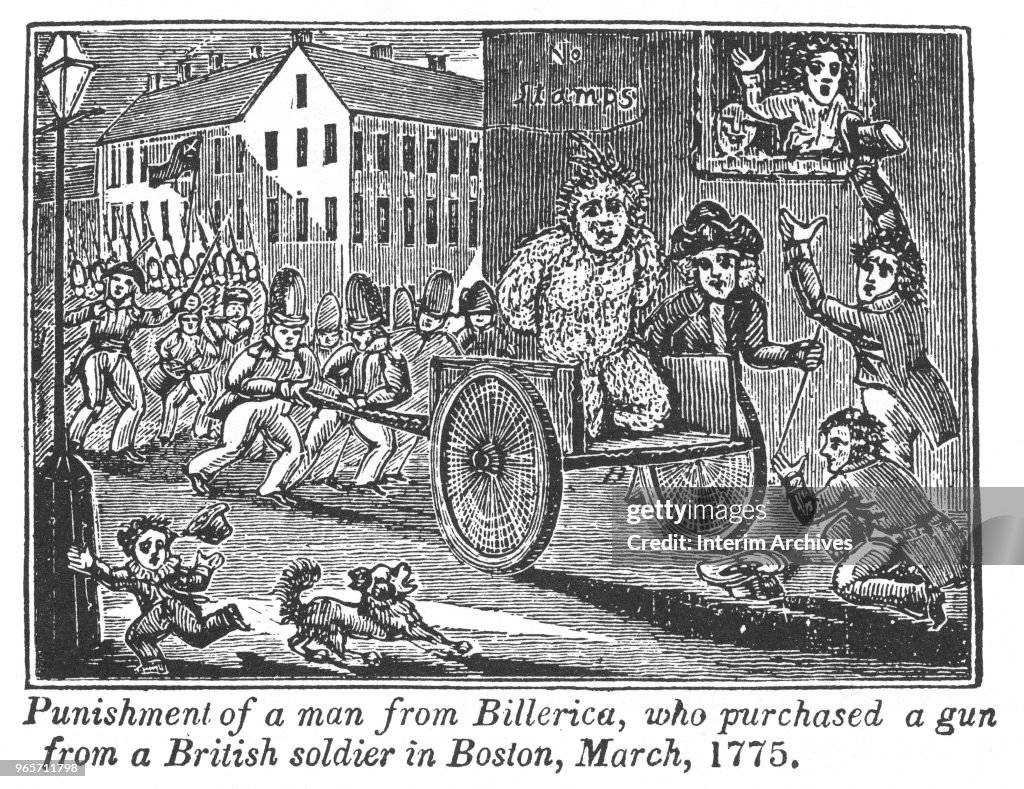
The British version intended to deride the Americans included verses that laughed at their lack of sophistication and military prowess.
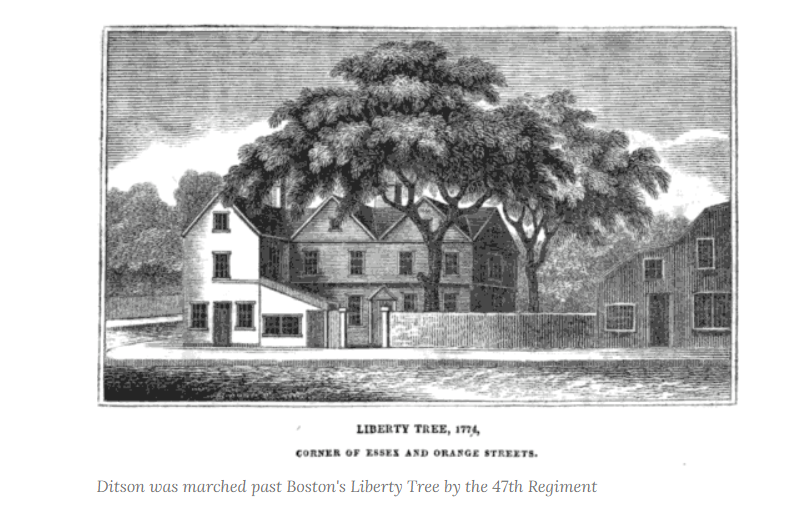
However, the Americans embraced “Yankee Doodle” with a sense of ironic pride. Turning the song on its head, they used it as a rallying cry for their cause, symbolizing their resilience and determination to forge a new nation, despite British scorn. The song’s chorus, with its reference to “Yankee Doodle” keeping it up and “Yankee Doodle dandy,” became a badge of honor rather than a mark of shame.
Lexington & Concord… The American Revolution Begins
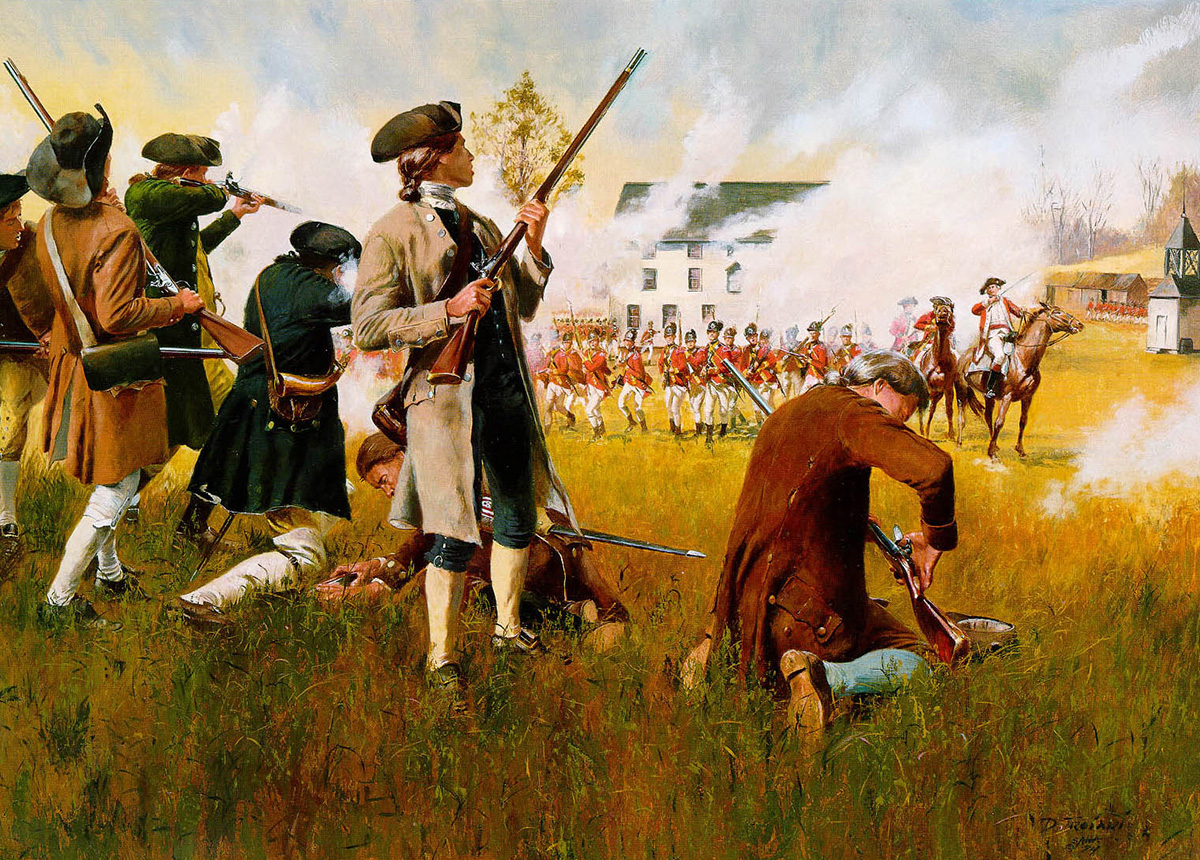
Reports say that British fifers and drummers teased the colonists by playing “Yankee Doodle” as their columns snaked along rural roads. In the small town of Lexington, the British soldiers confronted a line of Minutemen on the village green. A gun went off, British muskets opened fire, and in an instant eight Americans were dead or dying. British forces then continued on toward Concord and destroyed what weapons they found.
Now the British army had to march back to the safety of Boston. Colonial militiamen swarmed to the attack, taking up positions along the route. They hid behind trees and rock walls, picking off soldier after soldier. Some British troops broke ranks and ran.
Billerica Patriots Join the Fight at Meriam’s Corner… Battle becomes a rout
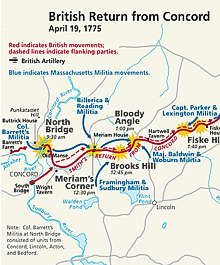
Other British troops, angered by the American tactics, break into houses and set them on fire. Eventually, reinforcements arrived from Boston to rescue the survivors.
The colonial militiamen returned the musical insult as they counterattacked. They sang “Yankee Doodle” as British soldiers retreated. It was as if the Americans were singing, “How do you like us Yankee doodles and dandies, now?” The American Revolution had begun. “Yankee Doodle” soon took hold as an unofficial anthem for what became the American Continental Army.
Six French Family Patriots from Billerica Ma Source: History of Billerica, Ma
“Yankee Doodle” Drummer: Ebenezer French Jr.
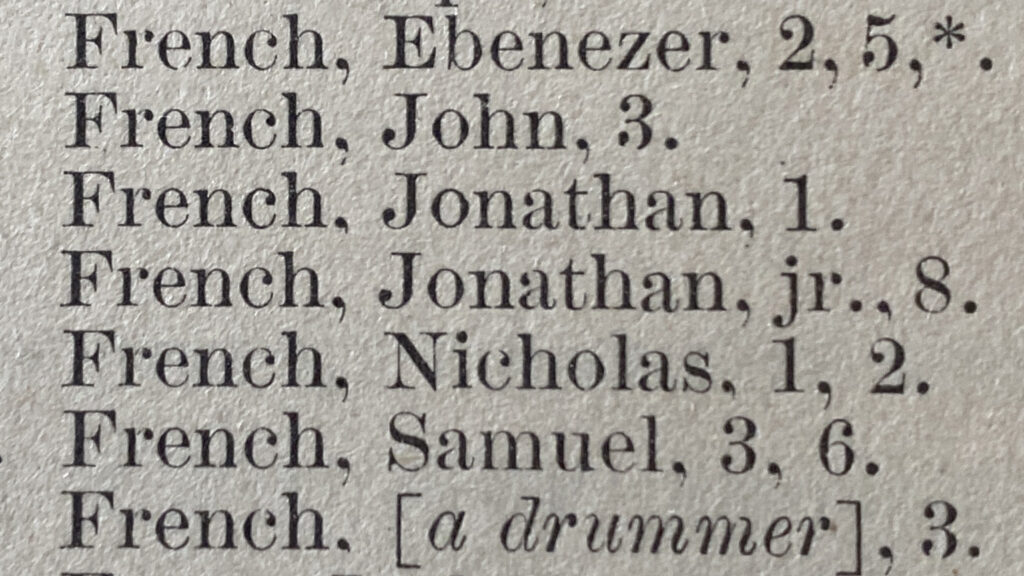
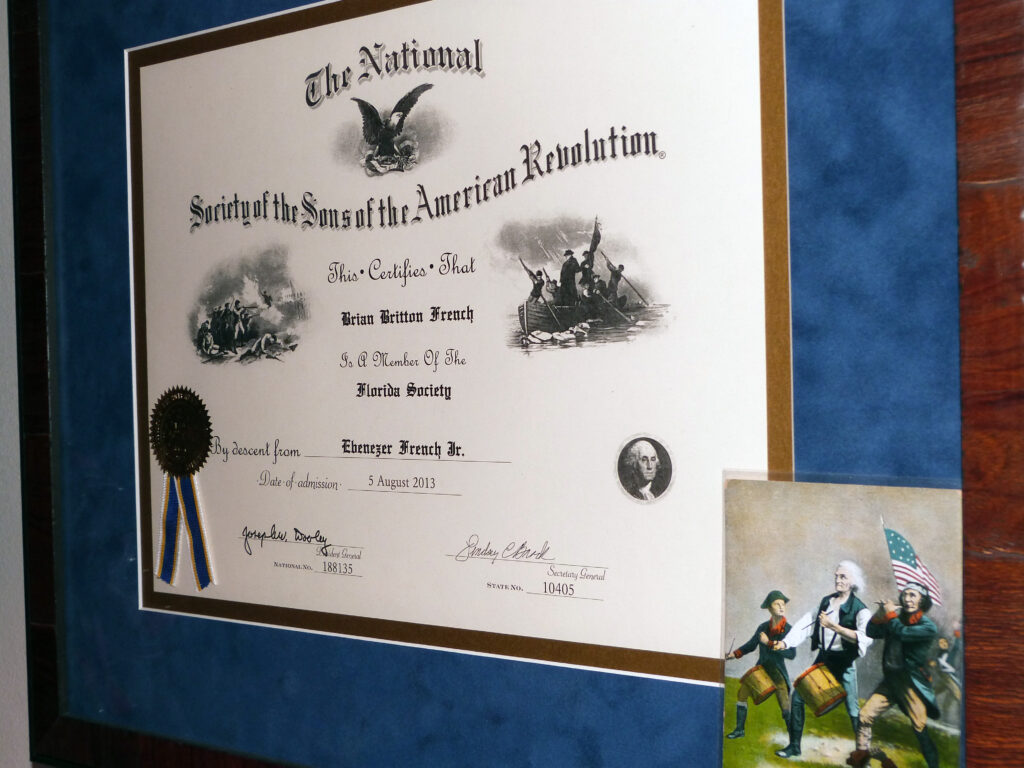
French Family Connection to Thomas Ditson Jr.
Thomas Ditson Jr sister, Sarah Ditson married Jacob French
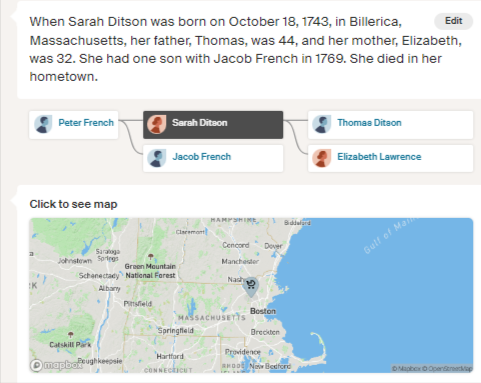
Over time, new verses of “Yankee Doodle” were added, changed, moved, and removed. A verse about George Washington, for example, was tacked on after he took command of the Continental Army in June 1775. Interestingly, one of the most familiar verses did not appear until 1842. Today, it is the first verse of the song that every American knows:
Yankee Doodle went to town
A-riding on a pony
Stuck a feather in his cap
And called it macaroni*.
Thomas Ditson Jr.’s ordeal, and his subsequent status as a local hero, exemplifies how the Americans transformed what was intended as an insult into a symbol of their enduring spirit and unity. Ditson himself went on to serve in the Revolutionary War, further solidifying his legacy. His story is remembered in Billerica with a monument and as a poignant reminder of the personal costs and sacrifices involved in the fight for American independence.
It was at the Battle of Peekskill in 1777 that Ditson lost the sight of one eye by the small pox. Ditson was discharged from the Continental Army at Peekskill, but upon his return to Billerica, he reenlisted in the Continental Army for another three years.
Cultural Significance of “Yankee Doodle”
Thomas Ditson Jr.’s story is commemorated in his hometown of Billerica, Massachusetts, where a monument stands in his honor. This monument serves as a reminder of the sacrifices made by ordinary individuals in the fight for freedom and the resilience required to overcome adversity.
His story is taught in local schools as part of the broader narrative of the Revolutionary War, emphasizing the human aspects of historical conflicts.
Impact on American Identity
The transformation of “Yankee Doodle” from an English taunt into an American anthem is a poignant example of how symbols and narratives can be reclaimed and redefined. It reflects the broader process of American identity formation, where elements initially used for derision were embraced and turned into sources of national pride.
The song, much like the flag helped to forge a common identity among the disparate colonies that would become states in the new nation.
The story of Thomas Ditson Jr. and the evolution of “Yankee Doodle” illustrate how cultural symbols and personal experiences intertwine in the fabric of national history, shaping and reflecting the values and attitudes of a nation.
During the American Revolutionary War, the song “Yankee Doodle” was a significant cultural artifact for both the British and the American sides, serving as a medium of mockery and psychological warfare. Its evolution from a tool of ridicule to a symbol of triumph encapsulates the changing dynamics and sentiments of the war.
American Reclamation and Pride
As the war progressed, American Patriots began to reclaim “Yankee Doodle” as their own. They embraced the tune and added their verses that reflected their defiance and determination. This reclamation was a form of psychological resistance, turning an insult into a badge of honor.
The song’s upbeat rhythm and catchy tune made it easy to adopt as a marching song, and it quickly became a staple in the American camps, serving to boost morale and unify the troops under a banner of shared identity and purpose.
Yorktown and the British Surrender
The most symbolic use of “Yankee Doodle” occurred at the British surrender at Yorktown in 1781, which effectively ended the Revolutionary War. As the British forces, led by General Cornwallis, marched out to surrender, the American band struck up “Yankee Doodle” in a powerful display of ironic victory and defiance.
This moment was rich with symbolism: the song that had once been used to mock the Americans was now played as a triumphant anthem celebrating their ultimate victory. It was a poignant reminder of the journey the American forces had undergone—from mocked militia to a victorious army.
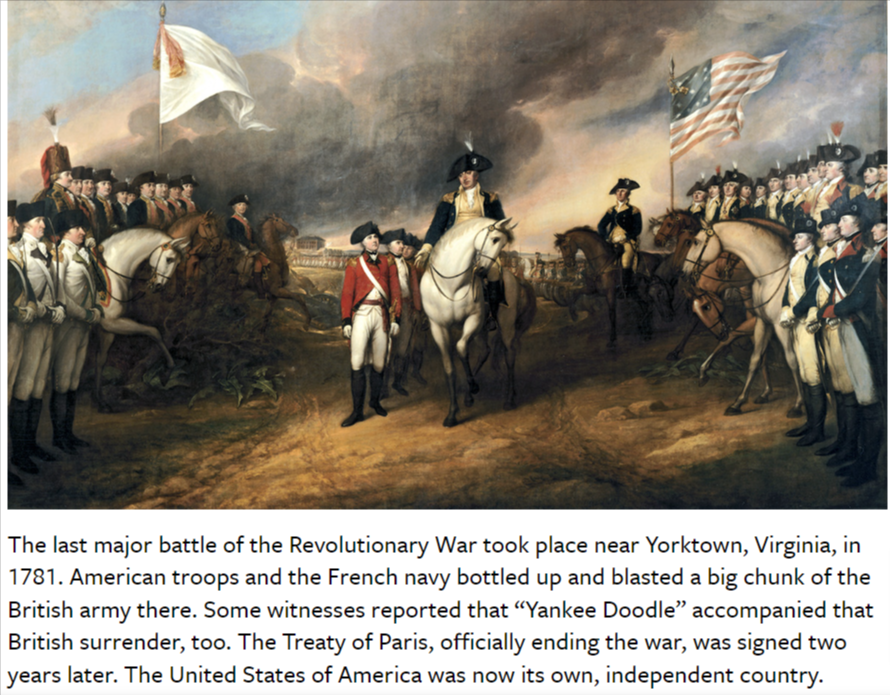
This playing of “Yankee Doodle” during the British surrender not only marked the success of the American struggle for independence but also highlighted the shift in power and prestige between the two sides. The song’s role in this crucial moment underscored how deeply it had become embedded in the American spirit and how effectively cultural symbols can be used to galvanize, motivate, and ultimately help define a nation.
Thus, “Yankee Doodle” stands not merely as a song but as a historical narrative in its own right, encapsulating the essence of the Revolutionary spirit and the American quest for independence. The transformation of the song from a means of derision to an emblem of victory illustrates the broader transformation of the American identity during the war.
The Patriots’ ability to co-opt and redefine what was meant to demean them is a testament to their resilience and ingenuity, key traits that propelled them to victory and helped define the emerging American ethos.


